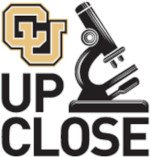
Rules:
- By submitting an image (either online or in person), you agree that the images may be used by the University of Colorado, Boulder, the BioFrontiers Institute, and the BioFrontiers Advanced Light Microscopy Core for advertising, promotional, and fund raising purposes. Usage will be appropriately accredited.
- All images must be acquired within the BioFrontiers Institute Advanced Light Microscopy Core or within a BioFrontiers-affiliated research lab.
- Standard image processing software can be used to enhance your images (i.e. ImageJ/Fiji, NIS Elements, Matlab…).
- Images must be submitted in a final, single frame format.
- Please submit your images as .jpeg or .tif. TIF is a loss-less format and therefore higher quality, however these tend to be much larger in size. JPEGs are compressed but are more manageable.
- Images submitted to prior image competitions are eligible, unless it was selected as a finalist (sorry, no repeat winners!)
- You must keep a copy of the original data file in the native file format. This will be useful if you are selected as a finalist. If you do not keep this file you will be withdrawn from the competition.
- Multiple submissions per person are allowed.
- Collaborative submissions are allowed.
- Have fun!
- If you do not agree with any of the listed rules, especially the have fun part, then you are not eligible to participate within the competition. By participating within the competition via an image submission, you are consenting to the listed competition rules.
Useful Imaging Tips:
- Acquire a high-resolution image whenever possible (use a high NA objective).
- Be sure to consider contrast in your images. Subtle differences, such as blue on black, can be challenging to resolve in printed form.
- If you are using the Nikon A1R, be sure to sample your image using the Nyquist sampling rate.
- Use the full dynamic range of the detector to create the highest contrast for your image.
- Avoid saturated pixels.
- Frame averaging can help minimize the noise within your image.
- If you are doing a montage (large image), be sure to have a decent overlap to minimize any aliasing or observable stitch lines.
- Make sure you are using the correct objective and immersion medium if a high NA is desired: oil for fixed and mounted samples, water for live samples. This will minimize spherical aberrations.
- If DIC or phase contrast is to be used, be sure to Köhler align the microscope.
< Back to Competition
